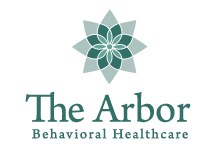Cocaine is a recreational drug used with significant potential for abuse that leads to cocaine addiction. Cocaine is a schedule II drug in the United States. It is available legally for use in a liquid form only within a hospital setting. It is not available for prescription. Like all street drugs, the quality and strength of the product purchased are inconsistent. In other words, short of testing, there is no way to determine what the user is consuming. This adds a serious element of risk to its use. Cocaine users are drawn to its perceived positive effects on the brain, including increased energy, motivation, and an elevation in mood.
Individuals can develop a substance use disorder or dependency on cocaine very quickly. Fortunately, The Arbor Behavioral Healthcare offers comprehensive cocaine addiction treatment.
What Is Cocaine?
Cocaine is derived from the coca leaf, common in several South American countries, most notably Peru, Columbia, and Bolivia. The raw coca leaves are chemically processed to produce a white powder. Street cocaine is diluted with other substances such as sugar, other local anesthetics, or baby laxative. When stripped of additives, cocaine looks like small, irregular chunks. These chunks are known as rocks or “crack” cocaine. Powdered cocaine is usually inhaled through the nose, also known as “snorting,” or dissolved in water and injected. Crack cocaine is smoked. Either form of the drug may be mixed with other drugs such as heroin or methamphetamine. The effects of use can be felt nearly instantly.
Effects of Cocaine Addiction
Cocaine’s effect on the brain is described as an intense euphoria. Additionally, cocaine dilates pupils increases energy and alertness. These effects are caused by an increase in the availability of dopamine neurotransmitters. This sense of euphoria is highly addictive. Studies on mice indicated that obtaining another “hit” of the drug was so compelling that the mouse will ignore food or water, eventually dying due to the “need.” The impact of cocaine on the body is devastating. As a stimulant, cocaine causes your heart to beat faster and constricts your blood vessels. It can cause insomnia.
All of which can lead to high blood pressure, stroke, or a heart attack. Cocaine use can cause a heart attack. The risk of stroke or heart attack is unpredictable as there is no correlation to how frequently it has been used or even the quantity is taken. Death is all too common. More than 40% of all emergency room visits for drug abuse are related to cocaine use. Signs of an overdose include an increase in body temperature, agitation, hallucinations, convulsions, and possible death.
Over time cocaine’s negative impact on health worsens. It can permanently damage the heart muscles and lead to kidney damage. Cocaine also alters brain chemistry over time. These changes can cause behavioral abnormalities to lead to Attention Deficit Hyperactivity Disorder (ADHD) or psychosis. Continual use results in reduced cognitive performance and poor decision-making skills. All of which makes life difficult.
Signs of Cocaine Addiction
Cocaine is emotionally, psychologically, and socially addictive. Cocaine addiction may not be apparent at first glance, but there are recognizable signs that you can be on the lookout for.
- Increased agitation and movement or hyperactivity may include muscle tics.
- Effusive enthusiasm and joy, at least in the beginning.
- Changes in concentration levels and focus
- Significant weight loss is common due to cocaine’s ability to suppress a person’s appetite.
- Because cocaine is commonly snorted through the nose, frequent nosebleeds may occur.
- Mood swings may be rapid due to the effect that cocaine has on the brain.
- When the drug is withdrawn, the user may be compelled to make every effort to obtain more, draining both financial and emotional resources.
There are no physical symptoms of withdrawal. However, the emotional symptoms can be dramatic and include:
- Anxiety
- Depression
- Tiredness
- Moodiness
- Poor concentration
- Sleep disturbances
Cocaine has a short half-life in the body, so withdrawal symptoms come on fast and furiously. One prominent study (Gawin and Kleber, 1986) of cocaine withdrawal reported three distinct phases:
- The crash – is characterized by acute dysphoria, anxiety, irritability, sleepiness, exhaustion, increased appetite, decreased craving to use.
- Withdrawal – the craving to use returns. The user experiences a reduction in concentration, irritability, and lethargy. These symptoms can persist for up to 10 weeks.
- Extinction – the former user experiences occasional cravings due to external cues. “Old habits die hard.”
Find the Treatment Necessary to Counter the Effects of Cocaine Addiction at The Arbor Behavioral Health
According to the National Institute on Drug Abuse (NIDA), 6% of all drug rehab participants were admitted for cocaine addiction. Of those, the overwhelming majority were uses of multiple drugs. The use of multiple substances complicates treatment. There are currently no medications used specifically for treating cocaine addiction though research is currently being conducted on a vaccine to prevent relapse. As with all forms of substance abuse rehab, the best program depends upon the patient’s specific needs. Your best bet is to consult with the addiction specialist at The Arbor to determine the right program for you or your loved one. Reach out to us today by calling 844.413.2690.

